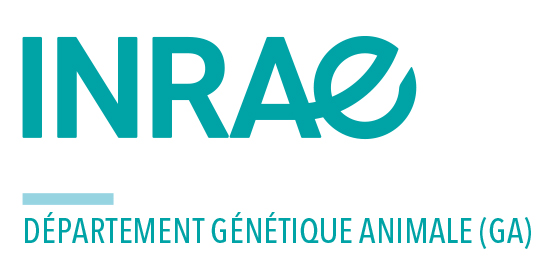Identification of recessive lethal mutations in sheep using homozygosity deficiency
Résumé
Livestock, similar to humans, harbor deleterious mutations within their genomes. These recessive mutations, when present in the homozygous state, can lead to fetal or neonatal lethality, as well as morphological defects. This reduces the reproductive success of female breeding animals and negatively impacts health and welfare. Inspired by reverse genetics approaches in cattle, we investigated the genomes of two dairy sheep populations, searching for haplotypes that are rarely or never found in the homozygous state. These deficits in homozygotes potentially indicate the presence of recessive lethal mutations.
Utilizing 50k-SNP genotyping data and pedigree information, we previously identified 13 independent haplotypes exhibiting a deficiency in homozygotes. Through whole-genome sequencing and targeted matings to generate homozygous animals, we uncovered three recessive loss-of-function mutations responsible for neonatal or juvenile lamb lethality. A nonsense mutation in the CCDC65 gene disrupts ciliary function, leading to respiratory failure and lamb mortality prior to weaning. Another nonsense mutation in the MMUT gene disrupts methylmalonic acid metabolism, causing lamb death within the first five days of life. Finally, a single base pair duplication in the SLC33A1 gene results in fetal losses and neonatal mortality. This study demonstrates the effectiveness of reverse genetics in identifying genetic defects in sheep. Implementing specific management strategies for these haplotypes/variants within dairy sheep breeding programs has the potential to significantly improve overall fertility and lamb survival rates.
Domaines
Sciences du Vivant [q-bio]
Fichier principal
 Identification of recessive lethal mutations in sheep using homozygosity deficiency.pdf (83.73 Ko)
Télécharger le fichier
Identification of recessive lethal mutations in sheep using homozygosity deficiency.pdf (83.73 Ko)
Télécharger le fichier
| Origine | Fichiers produits par l'(les) auteur(s) |
|---|




